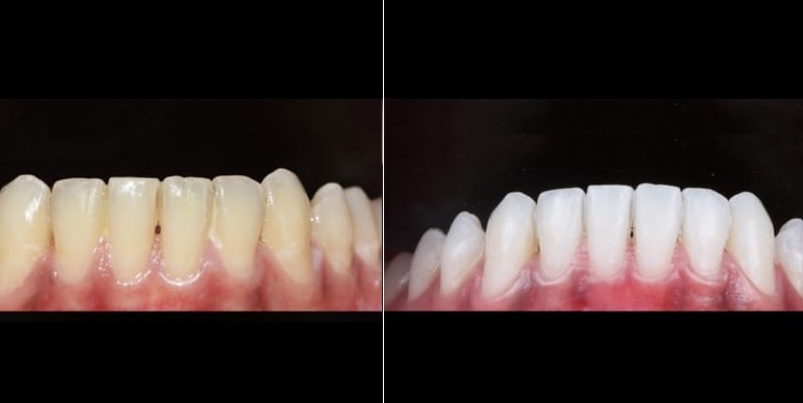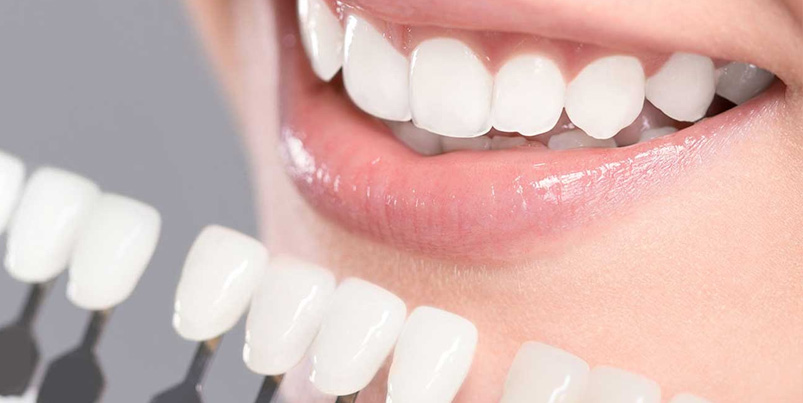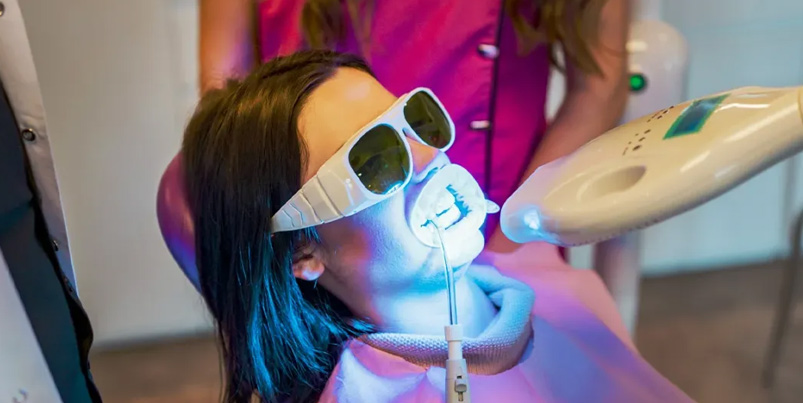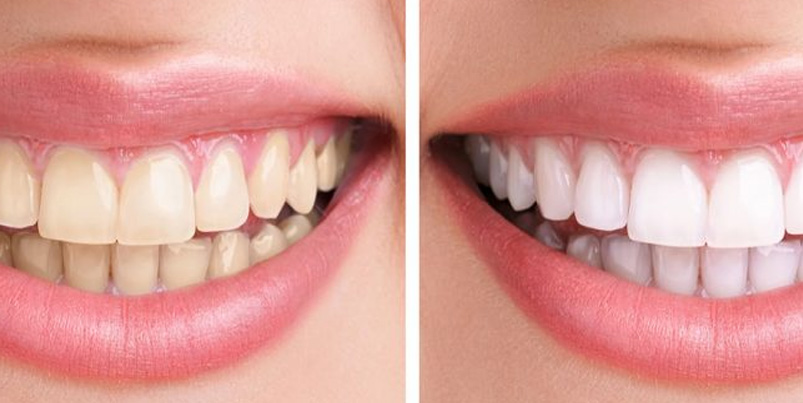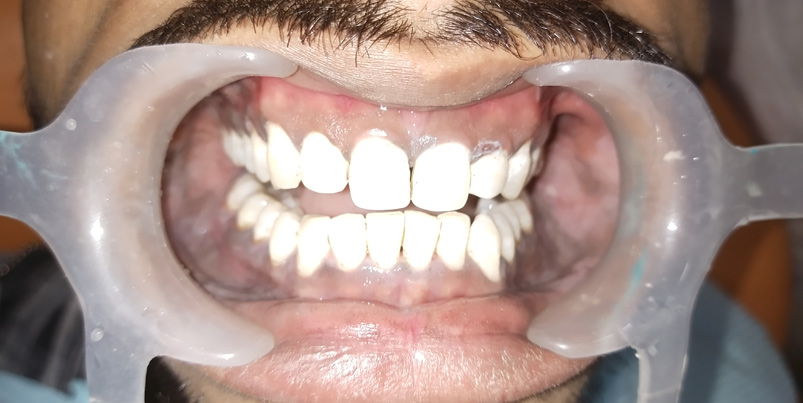Teeth whitening
Teeth Whitening Treatments
What is Teeth Whitening?
Teeth whitening is a cosmetic dental procedure that aims to lighten the color of teeth and remove stains and discoloration. Some of the most common methods for whitening teeth include bleaching with hydrogen peroxide or carbamide peroxide and using abrasive materials to remove surface stains. It is important to note that teeth whitening is not permanent and may require touch-ups or maintenance over time. It is also important to consult with a dental professional before undergoing any teeth whitening treatment.
What is the process of Teeth Whitening?
Film Removal: Eliminate the film on enamel caused by food or other substances.
Bleaching Procedure: Initiate bleaching, lasting 30-90 minutes based on stain severity. Gums are covered before applying the bleaching agent.
Gum Protection: Ensure gums are shielded during the bleaching process.
Optional Laser Treatment: Some bleaching agents may require laser lights for enhanced effectiveness.
Home Continuation (if needed): For severe stains, consider continuing the bleaching process at home for a few days.
Who needs teeth whitening?
Smoking, excess consumption of coffee, strong tea, red wine, and products containing strong dyes all cause the enamel to darken. Unwanted pigmentation accumulates and changes the color of teeth, even those that are perfectly healthy. Bleaching aids in dealing with this issue.
Mild to moderate fluorosis.
Age-related changes.
Certain medical treatments can also cause tooth staining.
A desire for white teeth.
Benefits of the treatment
- Bright smile: Aesthetics is the priority of the patients for achieving white teeth. This treatment will it brighten up the teeth and make them appear attractive.
- Removal of Stains and Discoloration: Tooth whitening will remove unaesthetic stains and discoloration from the tooth surface.
Oral health is overall health
Make sure you are using correct brushing technique
Brushing your teeth at least twice a day is essential – after breakfast in the morning and before going to bed at night. Spend at least 2 minutes brushing, ensuring that all areas are cleaned – the inside, outside, and biting surfaces of each tooth. The key is to aim the toothbrush bristles directly at the gum line, rather than the top of the tooth, as this is where plaque starts to form. Gently move the toothbrush in a circular motion, which will clean away as much plaque from the gums as possible.
Make sure you follow the right diet.
Try to reduce or eliminate the amount of sugary food and fizzy drinks you eat and drink. It converts to acid inside your mouth and can dissolve the minerals in tooth enamel, causing decay (caries) and eventually holes (cavities). Acidic foods and drinks can also cause tooth erosion which causes tooth sensitivity, discolouration and cracks over time.
More tips
After every meal, rinse out your mouth with antiseptic mouthwash to help kill germs, or at least water to wash away food debris. Another handy tip is to clean your tongue as it removes plaque that’s full of bacteria and can cause bad breath. While special plastic tongue scrapers are available at chemists, a toothbrush can be used just as effectively. Don’t be tempted to crack nuts, rip open a plastic package or even remove a bottle top with your teeth – there’s a risk of chipping or breaking. Remember, use your teeth just for chewing food.


